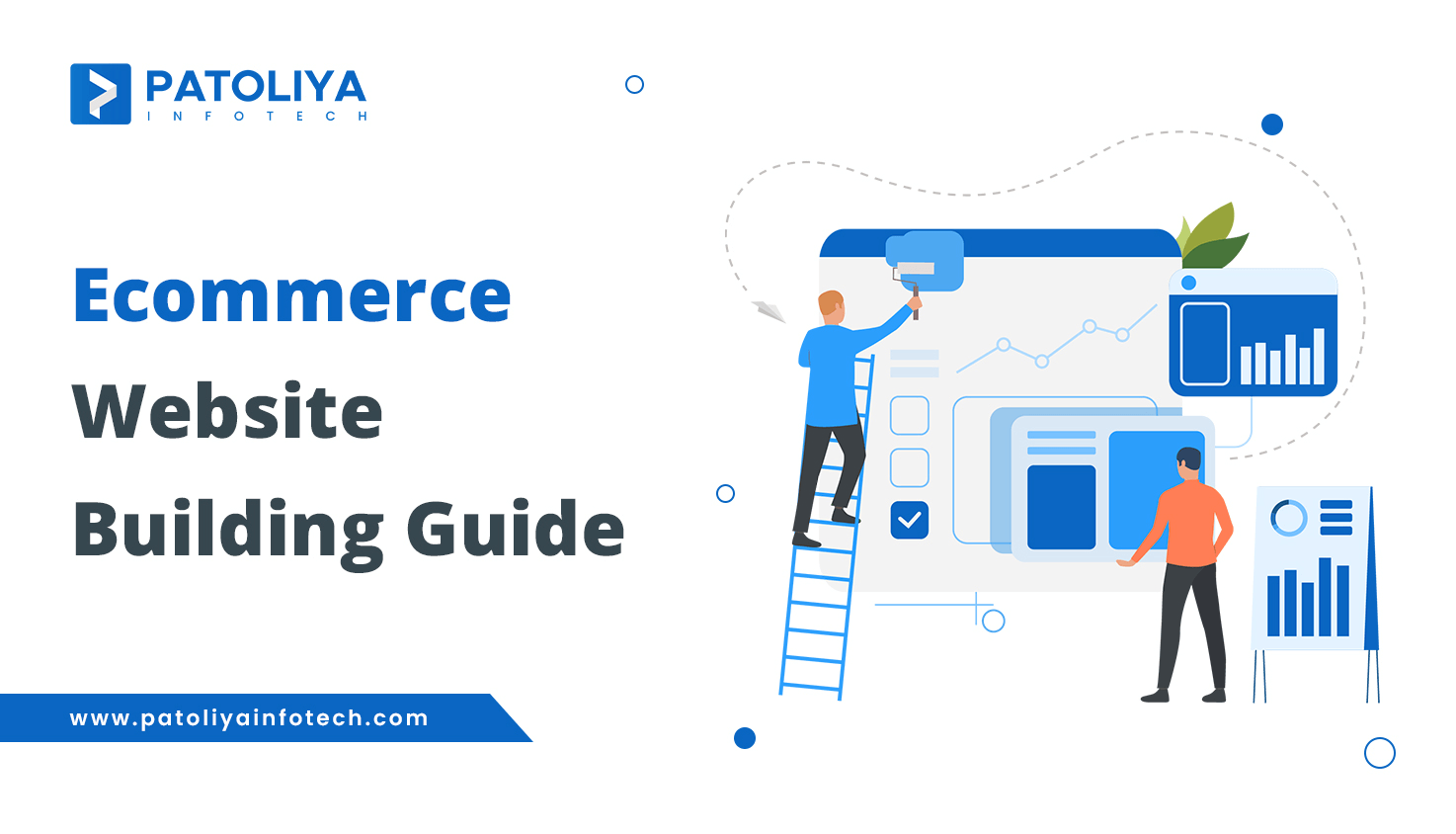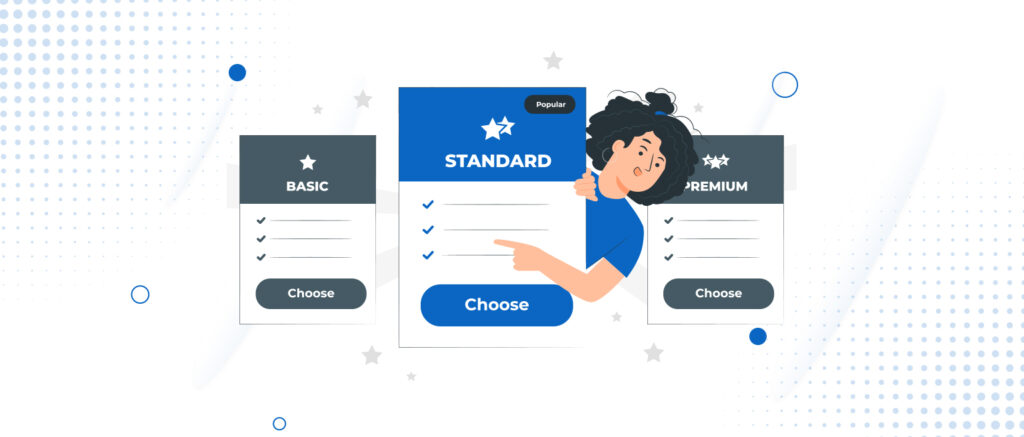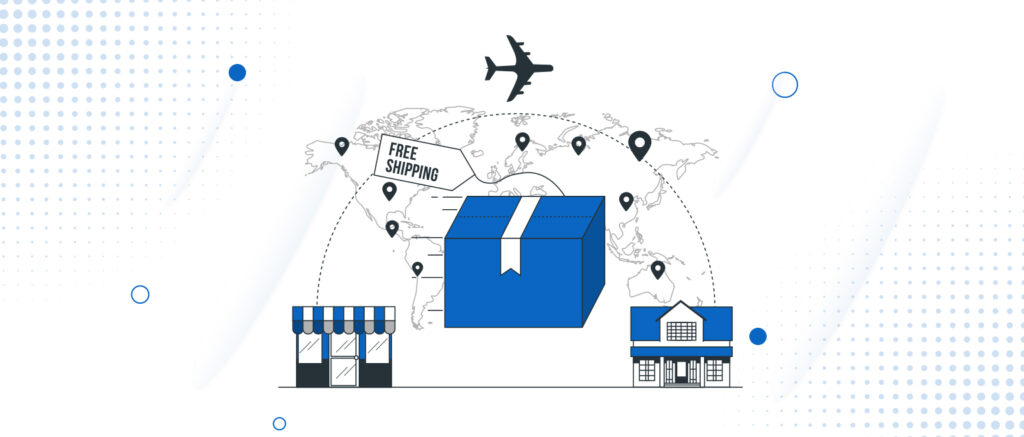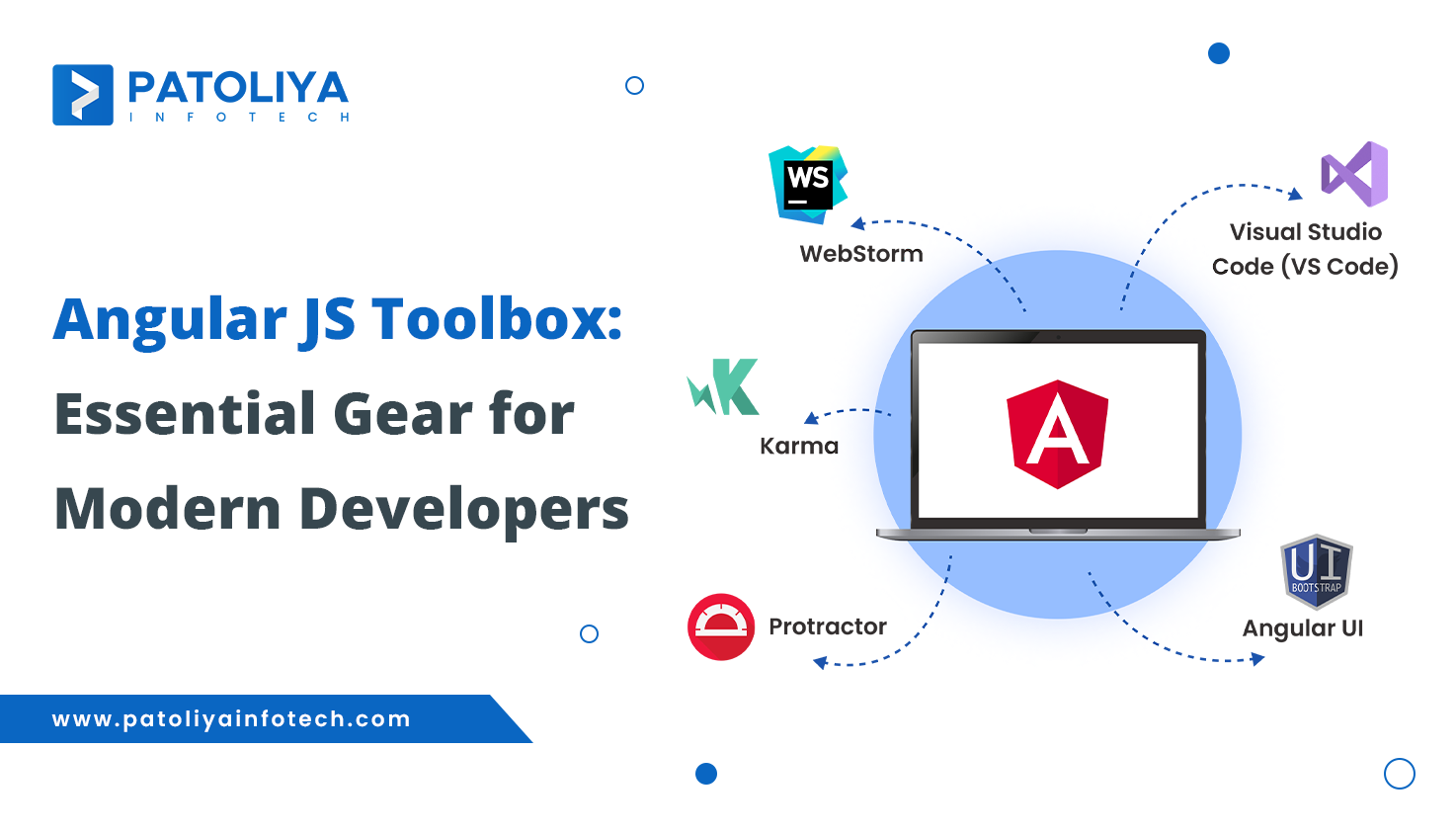Empower Your Business Mastering the E-commerce Website Game

Our lives are changing significantly during these transformational and unpredictably paced times. Traditional physical retailers are facing reduced demand or perhaps closure as the necessity to stop the coronavirus (COVID-19) from spreading leads to more demanding measures of social distancing. While this is happening, people are increasingly using e-commerce as a critical tool to get everything they need for their life.
It can be difficult to find ways to send your goods to clients who can't come to your physical store if you're a small business owner who previously depended strongly on in-store sales and customer traffic. It's essential to quickly launch an effective e-commerce site in order to respond to this situation.
Given the situation, this is a good time to talk about how to make an e-commerce website. Those of you who already have websites will also receive some helpful advice on how to integrate fundamental e-commerce capabilities into your current platform.
Let's get started so you can quickly go back to selling and interacting with your customers!
Why Should You Build an E-commerce Website?
When it comes to a company's financial success, the benefits of e-commerce growth are clear. But there are a lot more factors that make having an online presence beneficial. Businesses can explore numerous options to build connections that result in expansion by having an online platform.
1. Access new markets:
Reaching customers in new markets exclusively through a physical store can be difficult for numerous enterprises, especially small firms, and startups. You can reach online clients who would otherwise be inaccessible through only physical and mortar sales if you have an e-commerce website.
2. Create distinctive shopping opportunities:
Online retailers have the opportunity to directly affect the purchasing experience of their customers by offering unique videos, storytelling, and personalized services. These interactions don't have to end when clients check out; you can keep them going with email marketing or social media. Customers are often encouraged by such outstanding experiences that online buying offers inclusive alternatives not frequently offered in conventional physical establishments.
3. Make your brand more visible:
Your products are frequently listed generically and branded with the marketplace's logo when you sell on online marketplaces like eBay or Amazon. As a result, some customers might not even be aware that they are making a purchase from your company and might lose out on finding out about it. You have control over how your products are displayed when you build your own e-commerce website. Customers will remember your brand and not just the store where they made the purchase if you do this.
An Instructional Guide for Building an E-commerce website
Making an e-commerce website may be easier than you think. Numerous e-commerce solutions are now readily available that take care of the vast majority of the work for you. Understanding the services and identifying the particular needs of your website is still essential though. You may create a remarkable website that can grow and change your company in the coming years by doing a thorough research and making wise decisions.
- Choose the ideal e-commerce platform that suits your needs.
- Get a domain for your online shop.
- Find a developer that can help you.
- Choose an online store theme that supports your goals.
- Create a customized e-commerce template to suit your needs.
- Include your products in the store.
- Set up convenient payment choices for customers.
- Set up the shipment preferences appropriately.
- Preview, thoroughly test, and finally publish your online store.
Find Your Perfect E-Commerce Platform
Finding the best e-commerce website builder is a key first step in starting your journey. It cannot be emphasized how important it is to choose someone who can meet the needs of your products and brand.
1. Choose the ideal e-commerce platform that suits your needs

E-commerce systems can be categorized into three main types:
- SaaS (software-as-a-service) platforms
- PaaS (platform-as-a-service) platforms
- On-premises platforms
Platforms for SaaS and PaaS supply services through the internet, but SaaS just includes software and PaaS also includes hardware. The retailer's IT department hosts and manages on-premises platforms locally.
Platforms that offer setup and maintenance for a monthly subscription and transaction costs, such as SaaS and PaaS, are excellent for smaller or newly formed businesses. Platforms that are installed on-site offer additional customization and control.
Shopify, BigCommerce, Magento, WooCommerce, Wix, Big Cartel, Squarespace, Salesforce Commerce Cloud, and Volusion are a few examples of well-known systems. While Magento and BigCommerce are better suited for larger organizations, Shopify, Squarespace, and WooCommerce are user-friendly for small businesses. Others have more advanced capabilities, while website builders like Squarespace and Wix provide simple drag-and-drop templates.
Selection criteria for an e-commerce solution:
- For a seamless purchasing experience, make sure your website has a constant operation, high uptime, and quick loading times.
- Check the platform's capacity for handling your present traffic as well as anticipated growth, including busy seasons like Black Friday and Cyber Monday.
- A platform that can optimize your website for mobile devices, offer a seamless mobile purchasing experience, and make use of features like geolocation is what you should choose.
- If choosing self-hosted or open-source solutions, which demand additional security skills, give preference to platforms that offer strong payment and data security measures like SSL and PCI compliance.
2. Get a domain for your online shop
You can transfer an existing domain name to your online store builder if you already have one. But if you don't have a domain name, make sure you follow these recommended practices:

Avoid using unusual spellings:
When choosing a domain name. Instead, go with a simple, easy-to-type name. It doesn't necessarily need to be spell-check-perfect (using "Google" as an example), but it should still be simple to pronounce and spell. Using hyphens and digits makes it more difficult for people to share your website address.
Avoid using generic names:
Generic names have two drawbacks: either consumers will completely forget the name, or they may think the company is one with a similar name but a higher SEO ranking. Go with a distinctive and memorable brandable name.
Accept brevity:
Try to restrict the length of your domain name between 6 and 14 characters. Your clients will find it simpler to remember a shorter name. Furthermore, shorter names are more conducive to marketing initiatives and draw in more clients, even if they find your website through a search engine.
3. Find a developer that can help you

Hiring a developer can make the process of setting up your E-commerce site creation far easier if you're bootstrapping your firm. They can speed up the procedure thanks to their technological know-how, which enables you to start selling earlier.
There are a few important factors to take into account when choosing a developer to ensure a successful relationship. To successfully plan your launch date, ask about their anticipated schedule. Ask to see their portfolio of previously constructed websites and get testimonials from those companies. It's essential to make sure the developer comprehends and shares your vision and is able to produce exactly what you're looking for within your financial restrictions.
Consider partnering with a professional development team like Patoliya Infotech, where we specialize in crafting websites in a distinct and personalized manner tailored to your preferences. Our approach is centered around creating unique digital experiences that resonate with your vision and captivate your audience. With our expertise and dedication to innovation, we ensure to deliver websites that stand out and align perfectly with your aspirations.
4. Choose an online store theme that supports your goals
The first thing to think about is choosing a theme before you start Building digital storefronts. Themes are pre-designed themes that give your website a consistent look and feel.

You can choose from a wide range of prebuilt templates and themes whether you use WordPress, Shopify, Wix, or any other subscription platform for your E-commerce platform development.
- To provide customers with a pleasant experience, make sure the navigation is easy to use. On the left side of the page, use a readable navigation bar.
- Verify that the template incorporates your brand and supports movies, slideshows, and photos. Make sure it expresses your business type clearly.
5. Create a customized e-commerce template to suit your needs

The next step is to start the customization process once you've found the appropriate theme or template for your online store.
You will improve your header and footer during this phase, set up your site's navigation, and create a variety of pages, from your home page to your refunds and return policy page.
Examine the template's modification choices thoroughly, paying close attention to the fonts, color schemes, image dimensions, product presentation, and social media integration. Examine whether you need any extra programs to make the template more functional.
6. Include your products in the store
The product pages on your website are essential. Enhance them with excellent product descriptions, captivating photographs, and categories that are simple to traverse.

1. Product descriptions:
- Describe the product's details and value concisely.
- Avoid cliches and complex phrasing.
- Answer questions about who, what, where, and when.
2. Product images:
- Use colorful, high-quality photos.
- The size of each image should be the same.
- Include images of the product individually and in its environment.
3. Product categories:
- Create categories for your products to make browsing easier.
- For a certain brand or price range, use filters.
- Feature products to direct customers along their preferred shopping paths.
7. Set up convenient payment choices for customers

In order to create a successful online store after populating your e-commerce website, there are several crucial issues to take care of. These include implementing tax tools, controlling inventory, and setting up a payment processor.
Making a Payment Gateway Decision
Many online businesses find it useful to use third-party solutions like Stripe or PayPal when selecting and implementing a payment gateway. These choices simplify the procedure and increase security. It is imperative to guarantee that the data is securely secured throughout the transfer if you direct clients to external websites for payment.
When choosing payment integrations, keep these things in mind:
1. The simplicity of platform integration.
2. The tool has security measures available.
3. PCI (Payment Card Industry) standards observance.
4. The charges that apply to both you and the client.
Integrating Shipping
If your platform allows it, adding shipping functionality to your e-commerce website can significantly improve the user experience. You can concentrate on sales because of this integration's streamlined processes. Establish your shipping policy, such as whether to give free shipping, charge variable costs, or charge a set rate, before implementing the shipping capability. Spend some time defining your return and refund policies as well.
8. Set up the shipment preferences appropriately
Any e-commerce business must ship successfully in order to succeed. Customers have high expectations for the speedy delivery of their purchases, so it's critical to choose your shipping options wisely.

Set up your shipping procedures
Spend some time defining your shipping policy, which should cover things like costs and carriers. Choose whether you'll provide free shipping, a set price, or a flexible cost schedule. Take into account the shipping companies you will work with as well. To prevent any annoyance for foreign consumers during the checkout process, make sure that this information is made clear if you do not intend to ship worldwide.
Select the best delivery options for online stores
Make a choice on your delivery strategy. Will you use dropshipping or will you handle the packing and shipment yourself? Choose shipping software that easily connects to your current workflow so you can automate these processes in your company. You will have more time to give to other crucial duties as a result.
9. Preview, thoroughly test, and finally publish your Online store setup

Ensure a successful launch by testing everything on your site before publishing. Here's a checklist:
1. Check the checkout process:
- Test ordering by adding products to the cart.
- Verify if payments are processed.
- Confirm receipt of expected confirmation emails.
2. Verify store functions:
- Click all buttons and links on the site.
- Ensure buttons and links work properly.
- Test filters, categories, and 404-page redirection.
3. Assess mobile compatibility:
- View the store on a mobile device.
- Confirm correct dimensions and easy-to-click buttons.
- Ensure clear images on smaller screens.
4. Test on multiple browsers:
- Use Chrome, Firefox, Safari, and Edge to access the store.
- Ensure compatibility across all browsers.
- Request developers to fix any issues encountered.
5. Set up store settings:
- Configure language, time zone, address, contact details, tax, and measurement units.
- Double-check that all settings are accurately set before launch.
Conclusion
An outstanding e-commerce website goes beyond simple product sales; it becomes a platform for companies to create immersive experiences that strengthen their brand, draw in new clients, and convert casual customers into enthusiastic supporters. You may significantly improve your chances of success in e-commerce by picking the right e-commerce platform and putting an efficient marketing plan in place.


